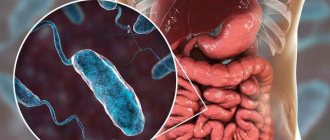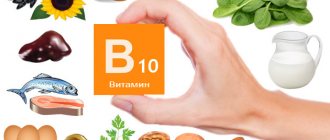29.01.2021
Myositis is inflammation of the muscles, accompanied by local pain during movement or palpation. Trying to protect the affected area on its own, the body increases muscle tension, which limits joint mobility, and subsequently weakness and atrophy of the damaged muscle may develop.
Muscle inflammation does not stop at one location or cause. Myositis often occurs as a consequence of infectious and autoimmune diseases. The course of the disease can be either acute or chronic, with skin rashes. With local infection, there is a high probability of development of purulent processes in the muscles.
Every person suffers from myositis at least once in their life. But in most cases, the disease remains undiagnosed, because the patients themselves define the pain as an exacerbation of osteochondrosis of the cervical or thoracic regions. Severe forms of myositis require long-term treatment and hospitalization, so you should not turn to self-diagnosis and self-medication for myositis.
Causes
Myositis is caused by various conditions that lead to inflammation in the muscles. The causes of myositis can be divided into several main groups:
Inflammatory diseases causing myositis
Diseases that cause inflammation throughout the body can affect the muscles, causing myositis. Many of these conditions are autoimmune diseases, in which antibodies have a damaging effect on the body's own tissues. Inflammatory diseases causing potentially severe myositis include:
- Dermatomyositis
- Polymyositis
- Myositis ossificans (Munchmeyer's disease)
Other inflammatory diseases can cause more mild forms of myositis:
- Systemic lupus erythematosus
- Scleroderma
- Rheumatoid arthritis
Inflammatory diseases are the most serious causes of myositis, requiring long-term treatment.
Infectious myositis
Viral infections are the most common infection that causes myositis. Much less commonly, myositis can be caused by bacteria, fungi or other microorganisms. Viruses or bacteria can directly affect the muscles themselves or through secreted toxins. Acute influenza viruses, as well as the immunodeficiency virus, can also cause myositis .
Medicines that cause myositis
There are many medications that can cause permanent muscle damage. Since it is not possible to confirm the inflammatory process in such cases, these conditions are sometimes called myopathy rather than myositis. Medications that cause myositis and/or myopathy include:
- Statins
- Colchicine
- Plaquenil
- Alpha interferon
- Cocaine
- Alcohol
Myopathy may appear immediately after starting medication or after some time (several months), especially when it comes to drugs. As a rule, drug-induced myositis is rarely severe.
Myositis after injury . Intense exercise, especially with untrained muscles, can lead to muscle pain, swelling and weakness for hours or days after exercise. Inflammation in the muscles is associated with microtears in the muscle tissue and, as a rule, the symptoms of such myositis quickly disappear after sufficient rest. Sometimes, with severe muscle damage, necrosis of muscle tissue is possible. This condition is called rhabdomyolysis. It occurs when a large group of muscles is damaged and is accompanied by a general reaction of the body to necrotic muscle tissue. Myoglobin molecules can change the color of urine from brown to red.
Classification
In clinical practice, several classifications of muscle myositis are used, which are based on the etiology, characteristics of symptoms and the course of the disease.
Depending on the origin, all myositis is divided into the following forms¹:
- Infectious purulent. Variants of myositis caused by pathogenic bacteria, in which the inflammatory process is accompanied by the formation of purulent-necrotic masses.
- Infectious non-purulent. Inflammation of striated muscles of infectious origin (most often viral), in which purulent masses do not form. They occur more easily than purulent forms.
- Parasitic. Muscle myositis, which is the result of toxic-allergic reactions and characteristic changes caused by infection with protozoa.
- Myositis ossificans. A characteristic difference is the deposition of calcium salts in the connective tissue. The shoulders, hips and buttocks are most often affected.
- Polymyositis. A variant of autoimmune myositis, in which a large number of muscles become inflamed at once. In children, such myositis can be combined with damage to the lungs, heart, blood vessels and skin, and in adults it is often associated with malignant tumors of internal organs.
- Dermatomyositis or Wagner's disease. An independent autoimmune pathology, in which, in addition to inflammation of the striated muscles, the skin, smooth muscles and internal organs are also affected.
Depending on the prevalence of the pathological process, the following are distinguished:
- Local myositis. More often they are of traumatic and infectious origin. Accompanied by inflammation of one or more adjacent muscles.
- Diffuse or generalized. Inflammation of skeletal muscles in different parts of the body differs. In most cases, they are associated with autoimmune pathologies.
Based on the activity and nature of inflammation, myositis is divided into the following options:
- Spicy. They are characterized by a debut with pronounced symptoms.
- Subacute. They often appear gradually, but progress relatively quickly.
- Chronic. They can be the result of acute myositis or develop independently, accompanied by moderate persistent symptoms.
Figure 1. Exercises for the neck: maximum turns of the head to the right and left (5 times), slow tilts of the head to the shoulders to the right and left (5 times in each direction). Dynamic resistance of the neck and palms to head tilts in different directions. Image: cteconsulting/Depositphotos
Symptoms of myositis
The main symptom of myositis is muscle weakness. The weakness may be obvious or only discovered during testing. Muscle pain (myalgia) may or may not be present.
Dermatomyositis, polymyositis and other inflammatory diseases accompanied by myositis are manifested by muscle weakness with a tendency to gradually increase over weeks or months. Muscle weakness can affect numerous muscle groups, including the neck, shoulders, hips, and back muscles. Typically, there is bilateral muscle weakness.
Muscle weakness from myositis can lead to falls, and even difficulty performing simple motor functions such as getting up, from a chair or from a bed. Other symptoms of myositis that may be present with inflammatory diseases include:
- Rash
- Fatigue
- Thickening of the skin on the hands
- Difficulty swallowing
- Breathing problems
Patients with myositis caused by a virus usually have symptoms of the viral infection, such as a runny nose, sore throat, cough, nausea, and diarrhea. However, symptoms of a viral infection may disappear several days or weeks before symptoms of myositis appear.
Some patients with myositis have muscle pain, but often there is no pain. Half of patients with myositis due to an inflammatory disease do not have intense muscle pain.
Most muscle pain is not associated with myositis, but with muscle overstrain or a reactive reaction to acute respiratory diseases (acute respiratory infections or influenza). These and other common muscle pains are called myalgias.
Prevention
Regular and balanced nutrition is of great importance for the prevention of myositis. It should contain a sufficient amount of foods with vitamins, magnesium, zinc, calcium, easily digestible proteins and amino acids. Every day you need to eat high-quality meat and fish, vegetables, fruits, liver, eggs, and dairy products. The diet should regularly include greens and leafy salads, as well as foods containing natural anti-inflammatory substances - salicylates. These include beets, herbal teas, carrots, spinach, raspberry juice and leaves.
Ointments and rubs for myositis
Drinking regime is also of great importance for the prevention of inflammatory processes in muscles, since almost 80% of muscle mass is water. The best drinks for everyday use are herbal teas, natural fruit juices, plain drinking water, compotes and fruit drinks made from berries and dried fruits. Consumption of coffee, strong tea, industrially produced sweet juices and carbonated drinks should be limited to 1-2 times a week.
Diagnostics
A doctor may suspect myositis based on symptoms such as muscle weakness, pain, and other symptoms consistent with myositis. The following are used in the diagnosis of myositis:
Blood tests. Elevated levels of muscle tissue enzymes (eg, creatine kinase) may indicate muscle tissue damage. Autoantibody tests can identify autoimmune disease.
Magnetic resonance imaging (MRI). A scan using a powerful magnet and a computer produces images of the muscles. MRI analysis helps identify areas of muscle damage currently and over time.
Electromyography (EMG). By inserting needle electrodes into the muscles, the doctor can test how the muscles respond to electrical stimulators and nerve impulses. EMG allows you to identify muscles that are weak or damaged by myositis.
Muscle biopsy. This is the most accurate analysis for diagnosing myositis . The doctor identifies the weak muscle, makes a small incision, and removes a small piece of muscle tissue to examine the tissue under a microscope. A muscle biopsy provides a definitive diagnosis of myositis .
There are many causes of muscle weakness and muscle pain more common than myositis. And therefore, the diagnosis of myositis may not be made immediately, but after some time.
Anatomy of the back muscles
Muscles (the more common name is muscles) are one of the parts of the musculoskeletal skeleton, formed by elastic tissue and capable of contracting under the influence of nerve impulses. Muscle tissue has a fibrous structure and consists of myocytes, a special type of cells that mature from myoblasts and form the basis of skeletal and smooth muscles. The muscles perform the function of flexion-extension, abduction-adduction of limbs and joints, and also allow you to change the position of the body in space and carry out the most important functions: breathing, heart contractions, moving food through various parts of the gastrointestinal tract.
The back muscles are represented by three groups, each of which performs its own functions:
- superficial muscles of the back and neck;
- deep muscles of the back and neck;
- suboccipital muscles.
Myositis of the back muscles from the inside
By their structure, the spinal muscles, which can also be called paravertebral or paravertebral, belong to the skeletal (striated) muscles. Their mass can reach 38-40% of a person’s body weight, and in professional athletes, people who regularly give their muscles sufficient physical activity and eat rationally, this figure can be even higher - about 53-59%.
The chemical and protein composition of muscle fiber is quite diverse, so one of the factors in the prevention of myositis and other muscle diseases is proper, regular and balanced nutrition. In a healthy person with sufficiently trained muscles, muscle tissue contains salts of organic and inorganic acids, proteins (actin, myosin and actomyosin), glycogen, phospholipids, creatine, ash and free amino acids. The level of uric acid should not exceed 0.02% of wet weight, and the volume of water is normally at least 70-80%.
Types of myositis
Treatment
Treatment for myositis depends on the cause of the disease.
The inflammatory (autoimmune) diseases that cause myositis often require treatment with drugs that suppress the immune system, including:
- Prednisone
- Imuran
- Methotrexate
Myositis caused by an infection, usually viral, does not require treatment. Myositis caused by bacteria is not common and requires treatment with antibiotics (up to intravenous administration in order to avoid a dangerous condition for the body such as sepsis).
Although acute necrosis of skeletal muscle is rare with myositis, if rhabdomyolysis is present, it is necessary to hospitalize the patient because large fluid infusions must be administered to prevent kidney damage.
Drug-related myositis is treated by stopping the medications. In cases of myositis caused by statin drugs, muscle inflammation decreases within a few weeks of stopping the drug.









